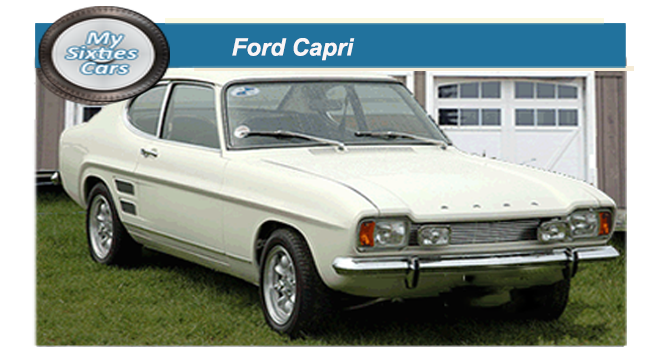
The first Ford Capri Mark I, Ford UK's first model range designed specifically for the Seventies, was first revealed to the UK and European public and trade press early in January 1969 at the Brussels Motor Show.
O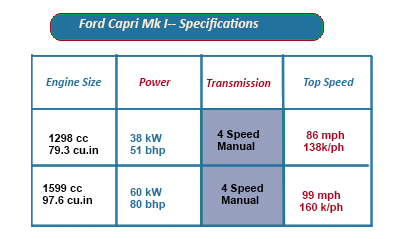 nce again, Ford displayed their remarkable ability for planning by having models ready for sales by the Spring of the same year.
nce again, Ford displayed their remarkable ability for planning by having models ready for sales by the Spring of the same year.
Ford Europe's plan was obvious- to duplicate the success in Europe that the US Parent company had enjoyed with the Ford Mustang.
 The plan was to develop the first ever European equivalent of the "pony car" that had been immensely popular in North America during the late Sixties.
The plan was to develop the first ever European equivalent of the "pony car" that had been immensely popular in North America during the late Sixties.
The Capri Mark I was one of Ford's first major European joint projects designed to find universal appeal among the UK and mainland Europe drivers.
The bulk of the design work for the Ford Capri came from the creative mind of Philip T. Clark, leader of the team that worked on the design of the Ford Mustang.
Sadly Clark would not survive to see the launch of the Capri as he passed away from illness in 1968, aged only 32.
For many years Ford US kept the fact that Clark was involved in the Capri's design under their hats, for reasons that were never apparent.
![]()
A wide variety of engines were used in the Capri throughout its production lifespan, which included the Essex and Cologne V6 s at the top of the range, while the Kent straight-four and Taunus V4 engines in lower specification models.
M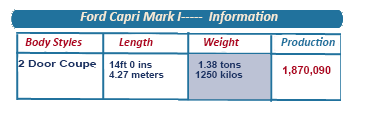 echanically based on the Cortina Mark I, the Capri was constructed at the Dagenham and Halewood plants in the United Kingdom, the Genk plant in Belgium, and the Saarlouis and Cologne plants in Germany.
echanically based on the Cortina Mark I, the Capri was constructed at the Dagenham and Halewood plants in the United Kingdom, the Genk plant in Belgium, and the Saarlouis and Cologne plants in Germany.
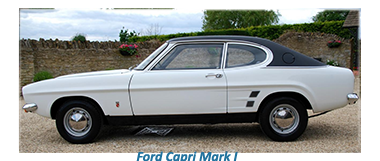 Initially, the plan was to mark Ford's new coupe as the Colt, but that option had to be swiftly discarded after it was discovered that the title had already been registered by emerging Japanese auto giants Mitsubishi.
Initially, the plan was to mark Ford's new coupe as the Colt, but that option had to be swiftly discarded after it was discovered that the title had already been registered by emerging Japanese auto giants Mitsubishi.
To help achieve that, it was available with a variety of engines, with the UK versions were powered by the Ford Kent straight-four in 1.3 and 1.6 L.
Under the new body, the running gear was very similar to the 1966 Cortina. The rear suspension employed a live axle supported on leaf springs with short radius rods.
![]()
MacPherson struts were featured at the front in combination with rack and pinion steering which included a steering column that would collapse in response to a collision.
U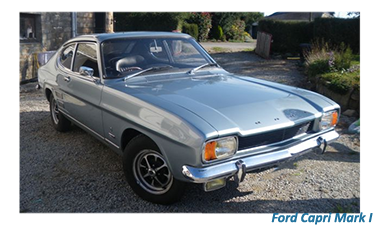 sing the mechanical components from the Mk2 Ford Cortina and intended as the European equivalent of the Ford Mustang, the Capri went on to be a highly successful selling nearly 1.9 million units during its seventeen-year production run.
sing the mechanical components from the Mk2 Ford Cortina and intended as the European equivalent of the Ford Mustang, the Capri went on to be a highly successful selling nearly 1.9 million units during its seventeen-year production run.
In production from 1969 to 1986, the Capri was not officially replaced by any Ford model; the second-generation Probe was effectively its replacement after its introduction to the European market in 1992.






